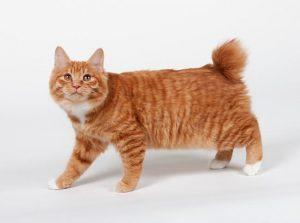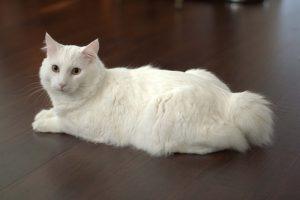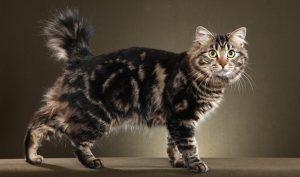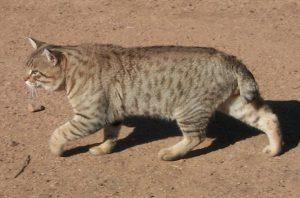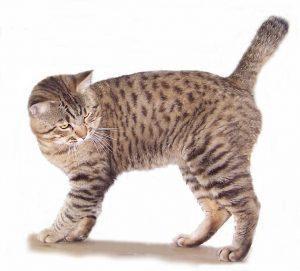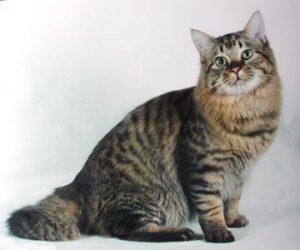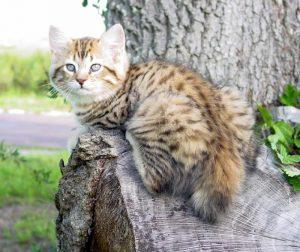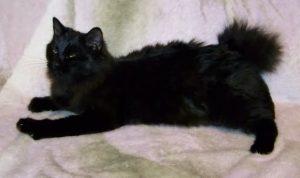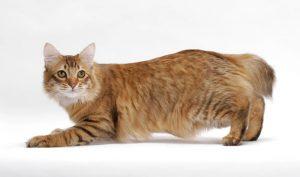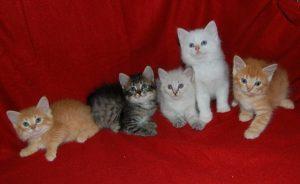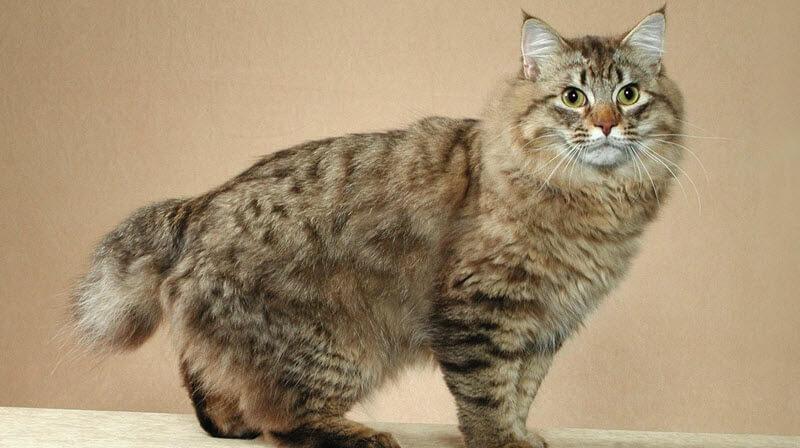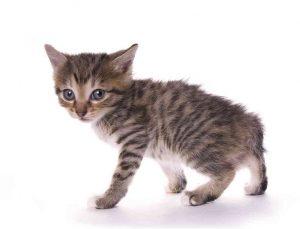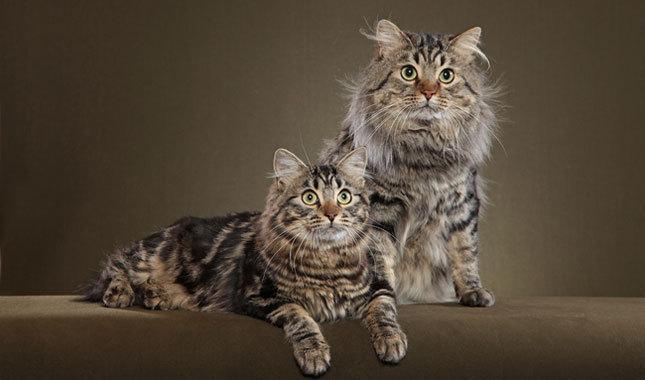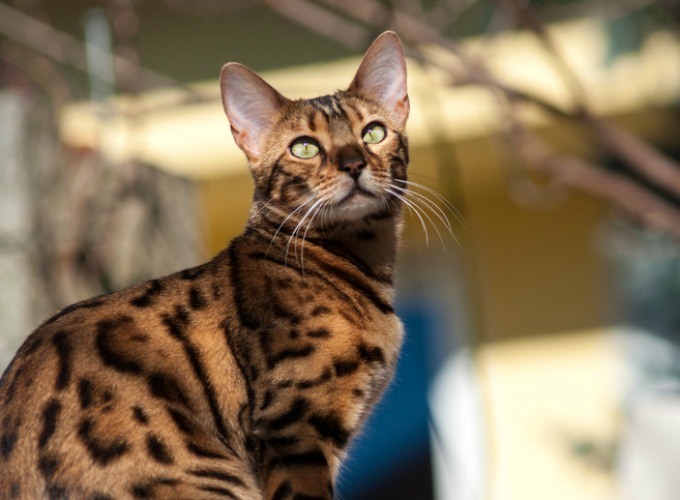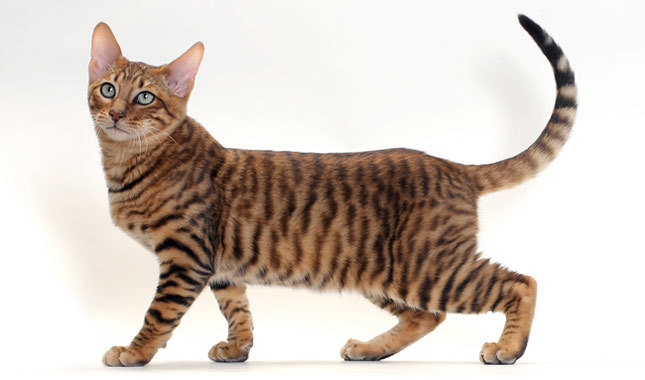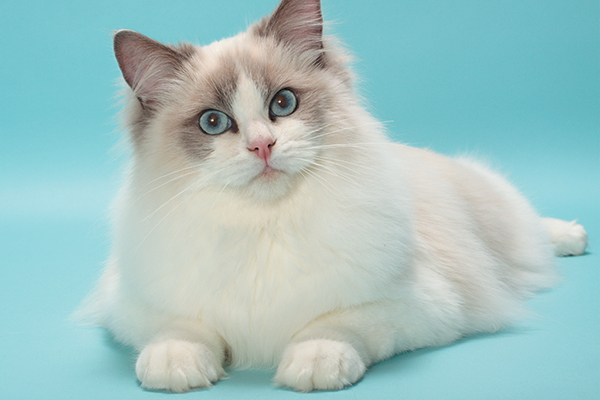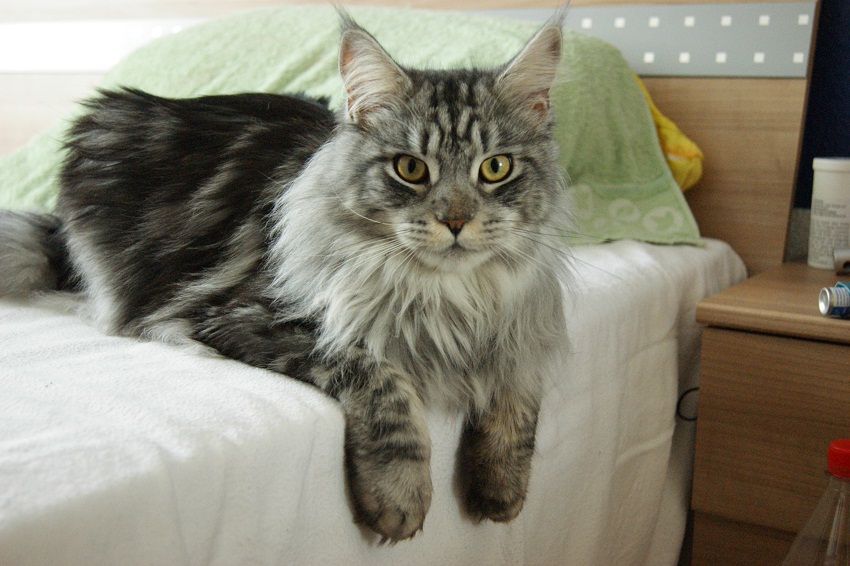The American Bobtail, a unique domestic feline breed, was developed in the latter part of the 1960s through the process of natural selection. These sturdy short-tailed breeds with their charming personality make an amazing lap cat.
Quick Information
Physical Appearance & Size
| Body Type: | Medium sized |
| Physical Description: | Rectangular body; full, broad chest; large wedge-shaped head proportionate to its body; long hind legs; large-sized feet with toe tufts; gently sloping wide nose; medium sized ears with a wide base; and a broad muzzle; |
| Weight ( Size): | Males: 12 to 16 pounds; Females: 7 to 11 pounds |
Colors & Patterns
| Coat Type: | Short or long-haired, water-resistant, double coat with a hard outer coat and soft, downy undercoat |
| Color: | Black, chocolate, brown, cinnamon, fawn, lilac, cream, white |
| Pattern: | Tabby |
| Eyes: | Almond shaped, proportionate to its head, color depending on the shade of its coat |
| Tail: | Stubby, bobbed tail that is 1/2 to 1/3 rd the length of the tail of a normal cat. |
Other Characteristics
| Average Life Span/ Life Expectancy: | 11 to 15 years |
| Temperament/ Behavioral Characteristics: | Adaptable, friendly, devoted, loving, gentle, intelligent |
| Lap Cat: | Yes |
| Shedding: | Heavy ( Might increase during spring and fall) |
| Vocalization/ Sounds: | Apart from the meows and purrs may click, chirp and trill when happy |
| Good with Children: | Yes |
| Are American Bobtail Cats Hypoallergenic: | No |
| Country: | U.S.A. |
| Competitive Registration/ Qualification: | CFA, ACFA/CAA, TICA |
History
Though this breed is said to have existed in America for a long time, its proper development began only in the second half of the 1960s.
Legend has it that the American Bobtail is an outcome of crossing the tabby and wild bobcat. In fact, the story goes that a young couple, John and Brenda Sanders, while vacationing in southwest America came across a short-tailed brown tabby male kitten named Yodi which they took to Iowa. As it grew up, it went on to produce a litter of short-tailed kittens on mating with Mishi (domestic color point), the pet female cat of the Sanders. Mindy Shultz, a family friend of this couple, caught sight of these kittens and took the initiative of developing them into a distinct breed by out crossing them with the long haired color points, hence leading to the origin of the American Bobtail.
In spite of the several theories regarding its origination TICA has given it recognition in the year 1989 as a breed developed through natural selection, with short-tailed domestic feral cats being its foundation stock. Other registries to have accepted it include the CFA (Cat Fanciers Association), ACFA (American Cat Fanciers Association) and CAA (Cat Aficionado Association), China. The World Cat Federation recognizes it under the group of both American Bobtail Longhair and Shorthair.
Personality Traits
- Has a sweet, amiable and gentle nature, that make them great therapy cats
- Bonds greatly with humans, being highly devoted towards its family members and always seeking for their attention
- Has hunting instincts since they have their ancestry linked to the feral domestic cats
- Enjoys catching insects by leaping mid-air
- Loves to carry toys in their mouth as if it were a freshly caught prey
- Though quiet-natured they express their joy by trilling, clicking and chirping
- Easy-to-adjust, settling well in diverse lifestyles, also getting along well with strangers and dogs
- Can be leashed without much effort and enjoys long walks
- Are playful and energetic, always up to funny antics
- Is a perfect companion for their owner during their time of distress
- Has a high level of intelligence
- Makes for a perfect travel companion especially when trained
Who is the American Bobtail Good For
- Owners who would love their cats to follow them wherever they go
- People looking for a perfect lap cat that may lovingly snuggle in their lap
- Households requiring pets who adjusts well with guests and other home pets
- If you desire for a perfect companion who could give you chances to laugh and lend a shoulder to cry on
- In case you are on the lookout for a feline with a sharp brain who you can teach impressive tricks
- If you are a truck driver or do a lot of traveling, needing a cuddly pet as your cabin companion
- For psychotherapists requiring a therapy animal for treating patients in distress
Care
Brush the American Bobtail’s coat using a slicker or rubber curry brush at least three times a week to eliminate the dead hairs, as well as to prevent mats and tangles. Nail trimming, along with cleaning of ears and eyes is also essential.
Being robust and healthy they do not suffer any health-related genetic problems.
Training Tips for American Bobtail
One can train these intelligent cats in an easy and hassle-free way to perform a host of activities
Train your cat to travel
- Once your cat is adept at living in a crate, place its carrier inside the car or any other vehicle, leaving the door opened.
- Engage it with treats
- After practicing this for some time turn on the car once your pet is used to it
- Then just move the vehicle a little away from the driveway and bring it back
- Once your cat settles down small trips and gradually extend to longer ones
- Starting this practice when it is still a kitten would help your pet get used to it
As a therapy cat
Since it is a non-aggressive, gentle cat, with a pleasing personality, you can get it certified as a therapy cat from any noted organization.
Feeding
Make it a point to give your American Bobtail good quality, nutritionally balanced cat food.

